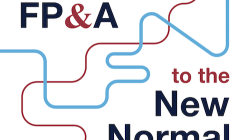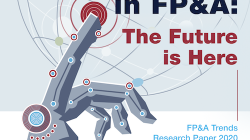These uncertain times demand increasingly agile and analytical Financial Planning & Analysis. How do we build FP&A teams that succeed in the world of ‘unknown of unknowns’?
The New Normal means that planning is no longer an extrapolation of the past. Similarly, business drivers that worked last year may no longer be relevant for the future. The reality is that organizations face multiple possible futures. Each one can be triggered by a crisis or an unforeseen event that will require the company to adjust or even change course.
So how should FP&A adapt to this New Normal?
There has never been greater uncertainty and a faster pace of change than over the past months.
And yet, at a time that requires speed and agility, and in a function that needs these qualities more than others, we cleave to our traditional management accounting methods and adhere to our longstanding processes.
The result is this paper that covers the elements crucial for any organisation approaching AI or ML for the first time including challenges, methods and key success factors.
As technology keeps advancing, digitalising the FP&A function and integrating it across the organisation is not out of the reach for any company. The successful companies of tomorrow will thrive by implementing data-driven and digital planning processes.
There are three key building blocks for modern Financial Planning and Analysis: Digital, Data and Analytics. What are these building blocks, and why do they matter from the FP&A perspectives?
Pagination
Subscribe to
FP&A Trends Digest

We will regularly update you on the latest trends and developments in FP&A. Take the opportunity to have articles written by finance thought leaders delivered directly to your inbox; watch compelling webinars; connect with like-minded professionals; and become a part of our global community.






